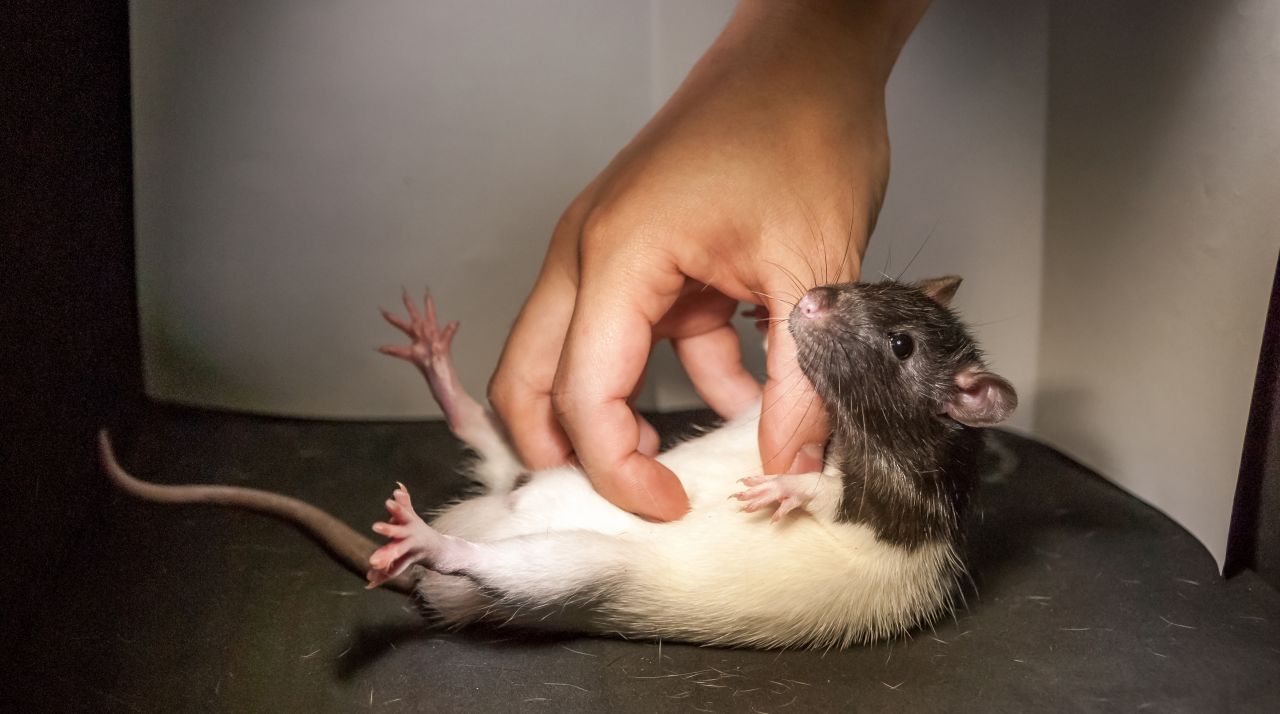
A rat receives a belly tickle. | Credit: Shimpei Ishiyama and Michael Brecht.
We’ve known for a decade or so that humans aren’t the only animals who are ticklish. In 2003, researchers learned that rats “giggle” when tickled. They don’t move their mouths or shake their stomachs, but they do let out a high-pitched, ultrasonic sound.
A study published last week in Science follows up on that research and hints at a new location for the tickle response. When rats in the study were tickled or played with a researcher’s scurrying hand, they let out an inaudible 50 Kilohertz squeak indicative of pleasure.
Researchers also monitored their brain activity and saw cells fire off in an area where physical touch is processed. “The surprising thing this time was that the brain responded the same way as the vocalizations,” says lead author Shimpei Ishiyama of Humboldt University of Berlin in Germany. When the rats were tickled, they laughed, and this time, the researchers could also see that in their brain.
Ishiyama then stimulated those cells–located high in brain, in the somatosensory cortex–without tickling or playing with the rats. Again, the animals let out the same happy sound. “This is important because it clearly shows that those cells must be tied to ticklishness,” he says. Laughter, it seems, can be triggered by mere stimulation.
This is a different part of the brain than researchers identified in 2003, which focused on activity in deeper, more primitive regions of the brain, often associated with emotions. Neuroscientist Jaak Panksepp, who led that original study, says that rats receive a mental reward when they are tickled here. “We can call it ‘social joy,’” he says.
Panksepp says that knowing how emotions move through the brain could help us better target psychiatric medicines for illness like depression and schizophrenia, which are associated with imbalance of emotions. “If this region is also rewarding, then it can become a target for medicinal development,” he says.
As a field, ticklishness remains quite mysterious. For example, we still don’t know why we can’t tickle ourselves–though a hallmark of schizophrenia is that you can. And it’s unclear why some regions of the body are more ticklish than others. For humans, it’s our armpits and necks and for rats, the underbelly. Though people are susceptible there, too.
What we do know is that ticklishness (and being tickled) is an important part of development. “Without playing when young, rats become socially incapable,” says Ishiyama. They are less interested in mating, they scurry around in unusual patterns, and they interact much less with others.
The new research also sheds light on the effect of mood on ticklishness. When placed in anxious situations, like high on a platform or under bright lights, the mostly nocturnal rodents were, understandably, much less ticklish.
The psychology behind the effect of mood on behavior is little understood, says Ishiyama. Rat research hints at our propensity for play and for ticklishness, which might be explained by more than sensory reaction. After all, as Darwin, and likely you, long ago understood — ”the mind must be in a pleasurable condition” for a tickle to take place.
Listen to rats giggle in this animated video from the AAAS:
